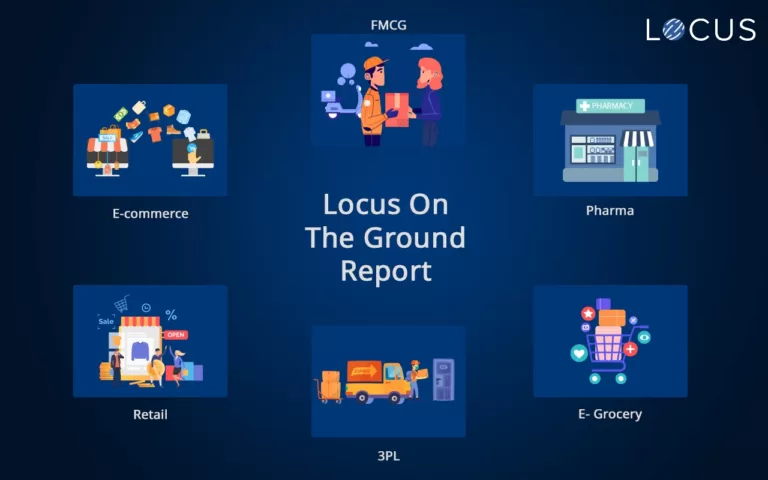3PL, Delivery Experience, E-Commerce, Last Mile Delivery Optimization, Route Optimization
How businesses can manage peak delivery periods?
Apr 14, 2020
7 mins read

Holiday seasons contribute 13.4% sales compared to total holiday retail sales in the United States- Statista, 2019
Deliveries usually are at an all-time high when there is a festival or at the beginning of a new year. Products may be discounted, overpriced, unavailable, or out-of-stock. But, due to the ongoing COVID-19 pandemic, logistics, and E-commerce companies are handling a colossal number of delivery requests.
Mostly, peak seasons follow a pattern, and logistics companies work on the schedule set by those patterns. But presently, logistics companies are experiencing an unannounced peak delivery season. This is because all consumers are staying at home, and thus delivery requests have multiplied.
The increase in consumers shopping online has added more stress on the logistics industry.
What is a peak delivery period?
US Consumers purchased merchandise online for a worth of $123 billion. They spent $874 billion offline. Together they have spent $1 trillion on holiday season sales. – Emarketer, Holiday season review 2018.
When is the peak season for a product? Every organization may have a different answer for this. The answer depends on the product, owner, industry, and other factors. Today, the boom of E-commerce has led to a drastic change in buyer patterns and delivery expectations.
Peak period is a crucial time in the year for many businesses, especially businesses with seasonal spikes. Identifying these peak delivery periods is the biggest challenge for the logistics and E-commerce industry.
The logistics industry works carefully during these peak delivery times to ensure that the supply chain runs smoothly.
How do you handle peak delivery periods?
The challenges that the logistics industry faces during peak delivery periods are:
- Limited time and resources to correct inaccurate and erroneous orders
- Lack of warehouse space putting additional strain on carriers
- Increase in demand for automation and transparency of delivery
- Delivery issues like missed deadlines, packing issues, and miscommunication
- Incorrect addresses
- Undersupply or shortage of goods due to panic buying
Here are ways to manage peak delivery periods effectively.
Planning the logistics operations for peak delivery periods

Data from past sales and deliveries during peak periods can come in handy for your planning process. It helps in framing the right order fulfilment strategy for the last-mile deliveries.
An eagle-eye view of previous year’s peak delivery period performances will help you deal with bottlenecks. It gives the information on customer complaints, reliable suppliers, and even targets achieved during the last-mile delivery.
There are many aspects to consider while planning for logistics operations during peak delivery periods. They are:
- Work out a realistic budget plan by including the expanding shipping costs
- Arrange for cargo insurance and devise security measures against theft or damage
- Choose the right strategic 3PL partners to manage your shipments effectively
- Additional storage facility costs
- Preparing demand forecasts for different regions, carriers, channels, and E-commerce fulfillment centers
Route Planning: Tool for efficient resource utilization
Digital retailers meet the delivery expectations of consumers 50% of the time. – Emarketer, Home delivery shopping survey, 2018.
With limited delivery resources and a large number of parcels, it is crucial to maintain delivery efficiency. To build that efficiency, it is essential to utilize route optimization tools. Consumers expect deliveries to reach them during their preferred timeslots. Hence, using route planning solutions will help avoid costly returns and re-deliveries.
Also, when fleet drivers or delivery agents load the goods, they have to arrange it based on the optimized route. This optimized route-based arrangement of parcels for loading minimizes time spent at each stop. It also helps drivers or delivery agents locate parcels in the delivery truck quickly.
Most logistics companies want to avoid costs in hiring additional resources, especially during peak delivery periods. With route planning software, you can utilize your existing resources to its full potential. Also, it helps plan your distribution route dynamically based on past deliveries and pre-assigned parameters.
Check Out: The Definitive Guide to Route Optimization
Increasing the resources

Package volumes will double from 50 million to 100 million per day by 2026. FedEx statement, June 2019.
During peak periods, logistics companies handle large product volumes. They do require some external resources to manage the increased volumes, but these resources lack knowledge of business processes and know-how.
The only way to bridge the gap in efficiency and quality of service is to use IT tools.
Utilizing mobile-IT tools can help in guiding the new staff wherever necessary. For example, for new fleet drivers, stops should be presented to them in an optimized manner with clear instructions. Such a system can help them manage their daily operations without any hassles.
Flexible delivery options: A necessity to manage peak delivery periods

61% of consumers have said that online retailers provide delivery options that they want.- Oracle Retail, 2019, Consumer study.
The approach to shipping matters a lot when it comes to creating a sustainable momentum in peak period deliveries. Every business has different operational requirements and objectives determined by its customer base.
Ensuring timely deliveries during peak delivery periods is possible only with flexible delivery options. Many successful 3PL providers offer different delivery options like same-day delivery, next day delivery, or even on-demand delivery.
Some businesses manage multiple sales channels like brick and mortar, retail, and E-commerce. A multi-channel carrier strategy can be the best option during the peak delivery periods.
Executing a multi-channel carrier strategy helps logistics businesses address specific channel needs as they deliver the goods to their consumers.
If you are using a single sales channel like E-commerce, varying shipments based on shipping options can ensure on-time deliveries.
Eliminate delivery delays using real-time visibility solutions

On-time delivery performance for major US carriers reduced by four percent.- Revell group, 2017
Consumers want delivery providers to respect their time. They require an updated, well-informed, and knowledgeable customer service to guide them with their queries and issues. Delays make consumers think that businesses never value their time. Delays determine how logistics providers manage customer expectations.
Managing customer expectations is the biggest challenge in peak delivery periods. The delivery experience of logistics providers determines future orders.
Peak periods mostly have a short delivery span. Businesses cannot afford to process deliveries in terms of batches. There is a desperate need for tighter supply chain monitoring for quicker delivery times. Hence, real-time visibility becomes crucial for successful sales during the peak delivery period.
Enhancing real-time visibility eliminates the need for consumers to contact customer service representatives for information about delivery. A real-time visibility solution helps monitor shipments by identifying delays in the last-mile delivery. It also reduces the chances of a delivery failure.
Improve the returns process

57% of UK shoppers did not purchase after they faced a poor return experience- Parcel and Postal International technology survey, 2019.
Logistics providers should equip their businesses with a stable and cost-efficient return policy. This is important because returns are important to the customer experience promise. Returns are crucial to building customer loyalty.
Improper handling of returns can reduce your profit margins drastically. Automating the logistics process can help in processing the returns quicker using fewer resources.
Informing shipping deadlines in advance

63% of consumers plan and decide to shop on free shipping day.- Bizrate Insights, September 2018.
You are responsible for ensuring that the consumers are well-informed about the business holidays and shipping deadlines or delays. This end-to-end communication sets clear expectations and avoids disappointments.
Shipping services also have their own cut-off time for domestic and international shipments. You should, therefore, inform the freight forwarding partners on the operational changes occurring due to reduced hours during peak delivery periods.
Conclusion
The right use of appropriate technology, with increased operational capabilities can help you smartly manage peak delivery periods.
Locus’ Dispatcher provides optimized routes for efficient delivery. It results in lesser idling costs, less consumption of fuel, and cost-efficient delivery. Also, it helps logistics managers allocate delivery schedules during peak delivery periods with less workforce.

Related Tags:

3PL
How has the on-demand industry coped with the coronavirus?
With billions under lockdown due to the coronavirus, there is an acute need for basic services so as to survive and run daily lives. Enter the on-demand industry. Across the globe, essential on-demand services are seeing a spike in demand. What is the On-Demand Industry? The on-demand industry works on fulfilling customer demand by offering […]
Read more
Featured
How has COVID-19 impacted different industries – Locus On The Ground March Report
The ripples of COVID-19 are being felt across industries. While some have seen a huge surge in growth, the others have seen a steep decline. Locus, which has clients in industries like E-grocery, E-commerce, 3PL, Retail, Pharma, and FMCG, among others, has come up with a ‘Locus On The Ground March Report’. This report will […]
Read moreMOST POPULAR
EDITOR’S PICKS
SUBSCRIBE TO OUR NEWSLETTER
Stay up to date with the latest marketing, sales, and service tips and news


How businesses can manage peak delivery periods?